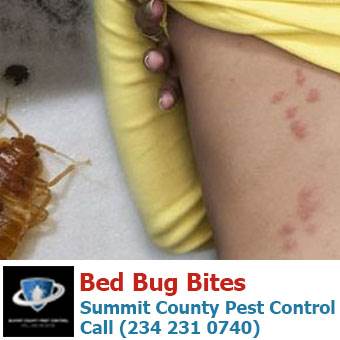Affordable A1 Bed Bug Removal in Houston - Expert Exterminators
Wiki Article
Recognizing the Lifecycle of Pests for Targeted Control Strategies
Understanding the lifecycle of insects is a basic facet of reliable bug monitoring approaches. By understanding the different phases of advancement that bugs go through, a much more targeted and exact technique can be embraced to manage their populations. This understanding not just drops light on the susceptabilities within the parasite lifecycle yet additionally leads the means for carrying out strategic steps that can disrupt their growth and recreation cycles. Through a deeper understanding of how pests progress and grow, customized control approaches can be developed to deal with particular points in their lifecycle, inevitably causing more effective insect monitoring end results.Relevance of Comprehending Pest Lifecycle
Recognizing the lifecycle of insects is vital for developing efficient and targeted control methods in pest administration. By understanding the various stages a parasite experiences from egg to grownup, pest control specialists can identify prone factors in the lifecycle where intervention can be most successful. For circumstances, understanding when larvae are most active can aid determine the optimum timing for using larvicides. Additionally, recognizing the life expectancy of a pest varieties can assist in forecasting populace growth patterns and potential invasion risks.Furthermore, identifying the details ecological problems required for each and every stage of the parasite's lifecycle can assist decisions on habitat adjustment or exemption approaches to disrupt the lifecycle and lower bug populaces. This knowledge allows pest administration experts to implement aggressive measures instead of counting only on reactive treatments, causing even more sustainable and lasting pest control remedies. Inevitably, a comprehensive understanding of bug lifecycles equips pest control experts to customize their strategies efficiently, minimizing environmental impacts and maximizing control end results.
Key Phases in Bug Development
To successfully implement targeted control strategies in bug management, an important facet depends on comprehensively determining and recognizing the key stages in pest advancement. Bug growth typically includes a number of crucial phases that are essential for their lifecycle and administration. The initial phase is the egg phase, where bugs lay eggs that later hatch out right into larvae. Larvae after that advance right into pupae, a phase where they undergo metamorphosis before becoming adult insects. Comprehending these phases is important as it assists in identifying prone points in the lifecycle where control procedures can be most reliable.

Vulnerabilities in Insect Lifecycle
Throughout the various stages of a parasite's lifecycle, distinct vulnerabilities arise that can be strategically targeted for efficient control actions. One vital vulnerability exists in the egg phase, where bugs are often much more prone to particular insecticides or biological control agents as a result of their soft outer shell, making them much easier targets for treatment. Additionally, the larval or nymph stage provides susceptabilities as pests undergo fast growth and development, needing high energy usage that can be manipulated by interrupting their food sources or introducing growth inhibitors. Pupal stages, defined by immobility and transformation, offer a home window for targeted control through physical barriers or certain therapies that impede effective introduction. Adult parasites, while extra resilient due to weblink their reproductive ability, can still be at risk throughout mating or egg-laying activities, which can be interfered with via scent catches or sterilization methods. Comprehending these susceptabilities in the bug lifecycle is vital for establishing reliable and exact control methods that efficiently handle pest populations while minimizing ecological impact.Applying Targeted Control Measures

Carrying out targeted control actions usually entails a multi-faceted approach. This may include habitat adjustment to make the setting less congenial to bugs, such as getting rid of standing water for mosquito control or sealing entrance points for rats. In addition, organic control techniques can be made use of, where all-natural predators or pathogens are introduced to keep parasite populaces in check.
Integrated Insect Management (IPM) approaches that incorporate different control steps in a coordinated and lasting fashion are typically the most efficient in achieving long-term parasite monitoring goals. By executing targeted control steps based on a thorough understanding of parasite lifecycles, parasite populations can be effectively controlled while lessening risks to human health and the environment.
Enhanced Insect Administration Practices

Furthermore, the consolidation of biological control agents, such as all-natural killers or virus of parasites, can help decrease reliance on chemical pesticides and promote a much more well balanced ecosystem. Executing physical barriers and traps can also belong to improved insect administration methods, supplying safe and targeted services for pest control. In addition, using scents and various other semiochemicals can interfere with pest breeding patterns and interaction, bring about minimized bug populaces gradually.
Final Thought
By recognizing vital phases in pest development and vulnerabilities in their lifecycle, targeted control procedures can be applied to reduce pest populaces. Improved insect management techniques can aid minimize the dependence on broad-spectrum pesticides and advertise even more ecologically friendly and sustainable pest control methods.Comprehending the lifecycle of insects is necessary for developing efficient and targeted control approaches in pest administration. By understanding the numerous phases a pest goes through from egg to adult, bug control specialists can identify susceptible factors in the lifecycle where treatment can be most effective. Inevitably, a comprehensive understanding of bug lifecycles equips bug control experts to tailor their techniques efficiently, decreasing ecological impacts and maximizing control outcomes.
By implementing targeted control measures based on a comprehensive understanding of pest lifecycles, pest populations can be effectively controlled while decreasing threats to human wellness and the environment.
By identifying key phases in parasite growth and vulnerabilities in their lifecycle, targeted control measures can be implemented to minimize parasite populaces.
Report this wiki page